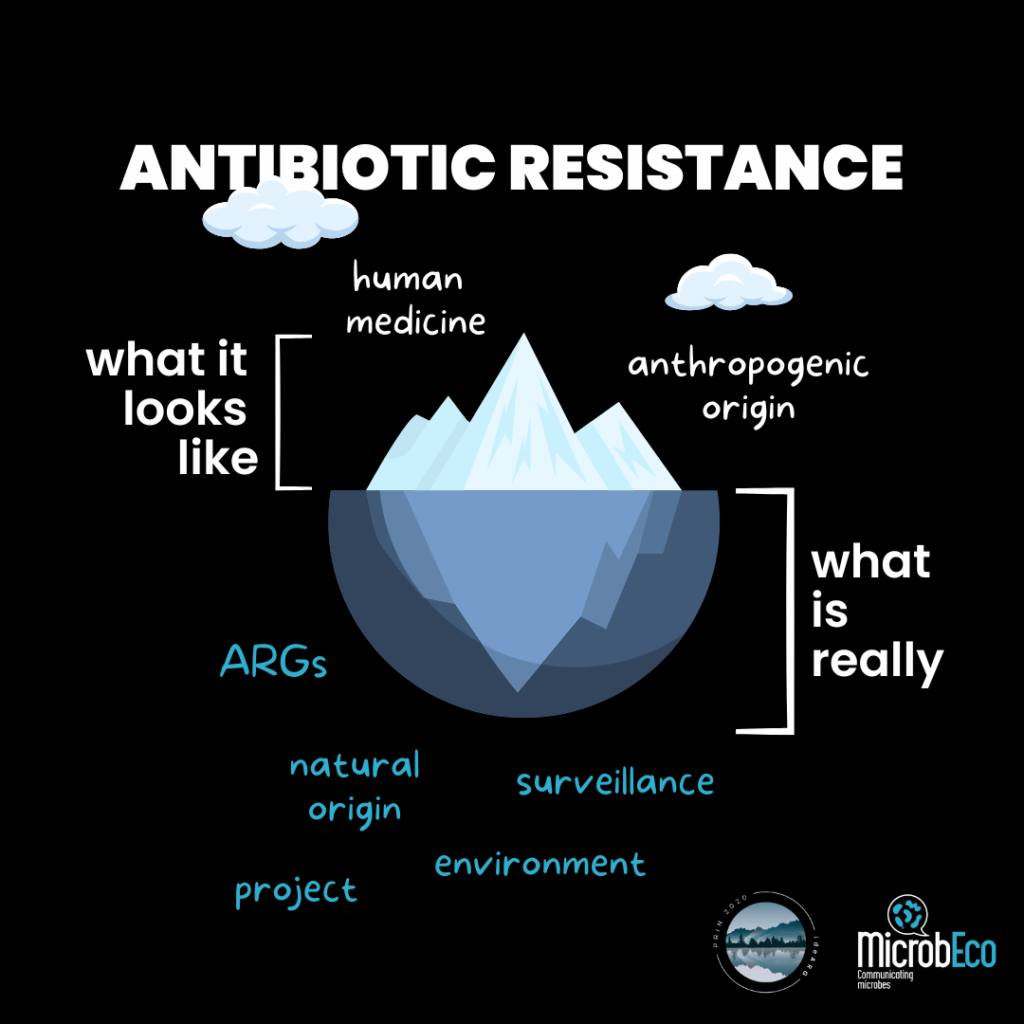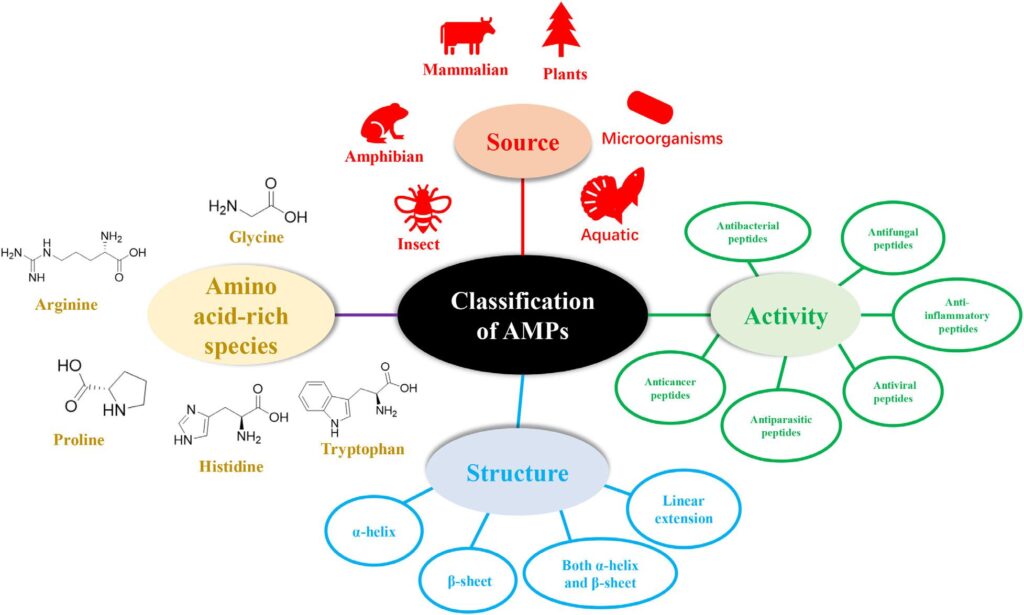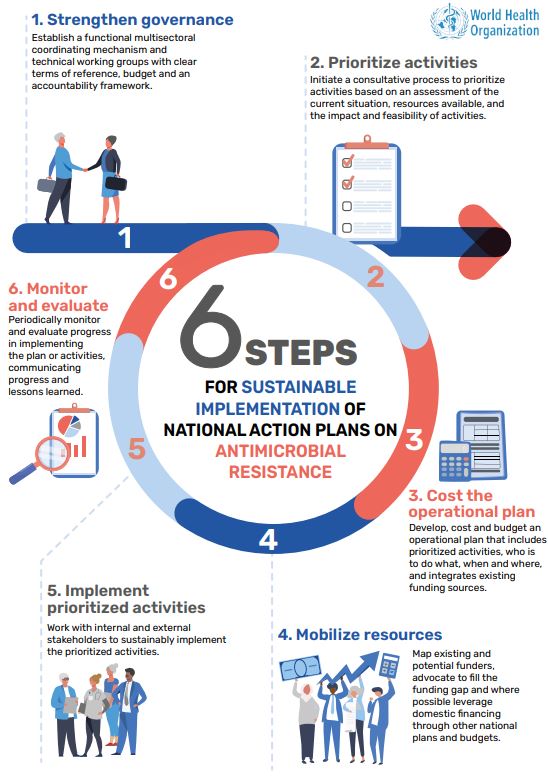Antibiotic resistance: a general overview
The ability of bacteria to protect themselves and resist certain threats such as the use of antibiotics is called antibiotic resistance or antimicrobial resistance (AMR) to refer to resistance toward all microorganisms. This ability allows bacteria to survive and continue to proliferate, sometimes resulting in harm to humans, environments, and animals.
Antibiotic resistance: acquired or natural property?
Although antibiotic resistance is often thought of as an ex novo event that intervenes only when the bacterium is in a stressed condition dictated by drug use, this is actually not the case (Fig. 1).
In fact, widespread in the environment even before the era of antibiotics are ARGs, antibiotic resistance genes. They do not arise as a consequence of anthropogenic activity but their spread could change according to it. In this context, therefore, it is good to clarify that multidrug resistance is part of a process where the infecting agent, host organism, and environment are all equally involved.
In addition, no less important for the permanence of ARGs are the interactions that Bacteria undertake with each other through mobile genetic elements (MGEs), small DNA sequences that move through the genome resulting in the mobilization of ARGs both within the individual bacterium and between species.

Credits: microbeco.org
Not only are ARGs already naturally occurring but also natural is the production of many antimicrobials derived from prokaryotes or eukaryotes. Indeed, antimicrobial peptides (AMPs) can be produced from multiple sources and classified into: antimicrobial peptides produced by mammals, amphibians, microorganisms, and insects (Fig. 2). Cathelicidins and defensins, for example, are present in humans, sheep, cattle, and other vertebrates; however, a recent study evaluated the efficacy of the peptide (OctoPartenopin) extract Octopus vulgaris, and many others are the sources of antimicrobial peptides under analysis. Frogs are the main source of amphibian AMPs, and the most famous AMP of frogs is magainin; cecropin, on the other hand, is produced by insects such as bees and Drosophila. Even more interestingly, microorganisms can also be producers of AMPs such as nisin and gramicidin.

Credits: Yuchen Huan et al., 2020
The causes
The causes of the emergence of antibiotic resistance can thus be grouped into two groups:
- causes of natural origin;
- causes due to anthropogenic activity.
Among the former we find selective pressure that drives microorganisms possessing a better ability to survive antimicrobials to generate offspring that become dominant within the population; mutations that can help microorganisms acquire new capabilities; and gene transfer whereby bacteria can exchange useful information with each other aimed at survival.
The second group of causes, on the other hand, includes all anthropogenic activities that promote the spread of antibiotic resistance genes such as the incorrect and unmoderated use of antibiotics in human and veterinary medicine, the massive use of antibiotics in hospital settings, and finally their use in agriculture.
The numbers
The spread of antibiotic resistance has become one of the most pressing threats to global health. An analysis conducted by The Lancet in 2019 assessed the impact of antibiotic resistance in 204 countries revealing that it caused about 1.27 million deaths that year, more than HIV and malaria, and that it indirectly played a role in 4.95 million deaths.
Surveillance systems
In order to keep the phenomenon under control but also to unify the efforts made by individual nations, in 2015, WHO member states initiated GAP-AMR, a plan that not only looks at reducing the phenomenon by focusing on correct diagnosis and treatment, but also turns a glance at proper communication based on raising awareness within the population and expanding economic resources in order to help research aimed at filling knowledge gaps on the topic (Fig. 3). Subsequently, the GLASS project was born with the aim of standardizing the approach used against the phenomenon.

Credits: who.int
What to do to fight antibiotic resistance: best practices and knowledge
The data talking about antibiotic resistance are clear, and clear is the commitment needed from all citizens.
Prevention is the basis of any phenomenon that includes human health, and in this context the implementation of good hygiene practices and the dissemination of proper vaccination campaigns play a crucial role. Then it is important to implement, in human and veterinary medicine, proper diagnosis based on the use of tests already available for the investigation of major infections. Finally, the key point of the issue is the wise and moderate use of antibiotics in any setting.
Knowledge is also a point to emphasize. Spreading awareness to countries is critical for knowledge of the causes and effects of all human actions. Education at any level and targeting individuals of any age plays a key role.
In this context, the PRIN 2020 IdeARG (Fig. 4) grant aims to outline a clear history of the origin and spread of the antibiotic resistance phenomenon by dwelling on the ecological impact that ARGs have. Not only that, the project, through the cross-cutting work of scientists focused on multiple fronts, aims to be multidisciplinary and all-encompassing so as to touch every area where antibiotic resistance takes root.

Credits: Luigi Gallucci , Elena Panariello
Sources
- Z. Zhang et al., “Assessment of global health risk of antibiotic resistance genes,” Nat Commun, vol. 13, no. 1, Art. no. 1, Mar. 2022, doi: 10.1038/s41467-022-29283-8.
- R. Zhao et al., “The co-occurrence of antibiotic resistance genes between dogs and their owners in families,” iMeta, vol. 1, no. 2, p. e21, 2022, doi: 10.1002/imt2.21.
- C. J. L. Murray et al., “Global burden of bacterial antimicrobial resistance in 2019: a systematic analysis,” The Lancet, vol. 399, no. 10325, pp. 629–655, Feb. 2022, doi: 10.1016/S0140-6736(21)02724-0.
- “Causes of Antimicrobial (Drug) Resistance | NIH: National Institute of Allergy and Infectious Diseases.” https://www.niaid.nih.gov/research/antimicrobial-resistance-causes (accessed May 01, 2023).
- Y. Huan, Q. Kong, H. Mou, and H. Yi, “Antimicrobial Peptides: Classification, Design, Application and Research Progress in Multiple Fields,” Frontiers in Microbiology, vol. 11, 2020, Accessed: May 01, 2023. [Online]. Available: https://www.frontiersin.org/articles/10.3389/fmicb.2020.582779
- V. Rojas, L. Rivas, C. Cárdenas, and F. Guzmán, “Cyanobacteria and Eukaryotic Microalgae as Emerging Sources of Antibacterial Peptides,” Molecules, vol. 25, no. 24, p. 5804, Dec. 2020, doi: 10.3390/molecules25245804.
- V. Maselli et al., “OctoPartenopin: Identification and Preliminary Characterization of a Novel Antimicrobial Peptide from the Suckers of Octopus vulgaris,” Mar Drugs, vol. 18, no. 8, p. 380, Jul. 2020, doi: 10.3390/md18080380.
- https://www.who.int/initiatives/glass
Science communicator. I deal with outreach and dissemination for research projects. My skills range from social media management to organising festivals and events.
My degree in biology has led me to focus on communicating microbial ecology for MicrobEco.
I am passionate about graphics, design and data visualisation.